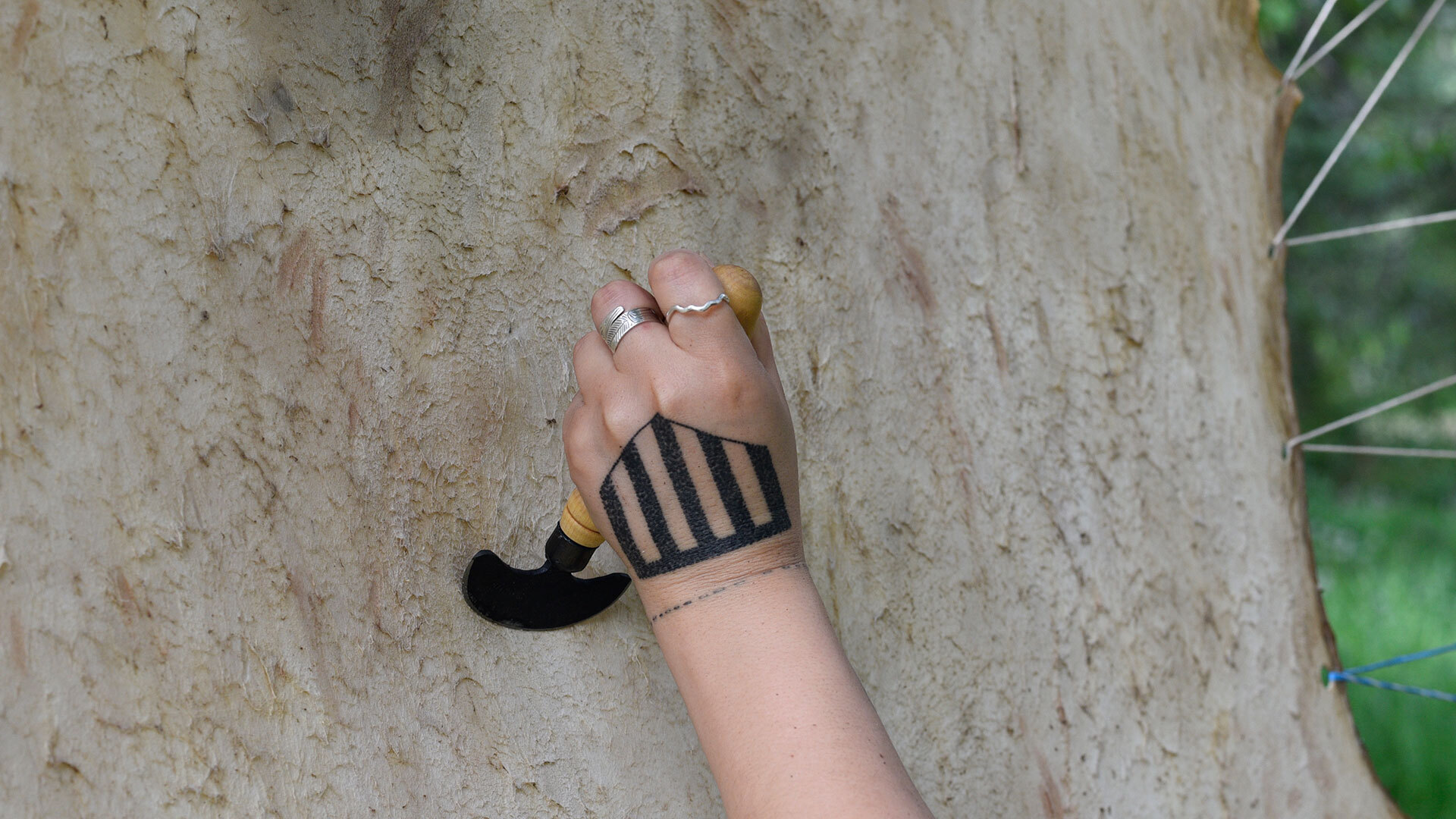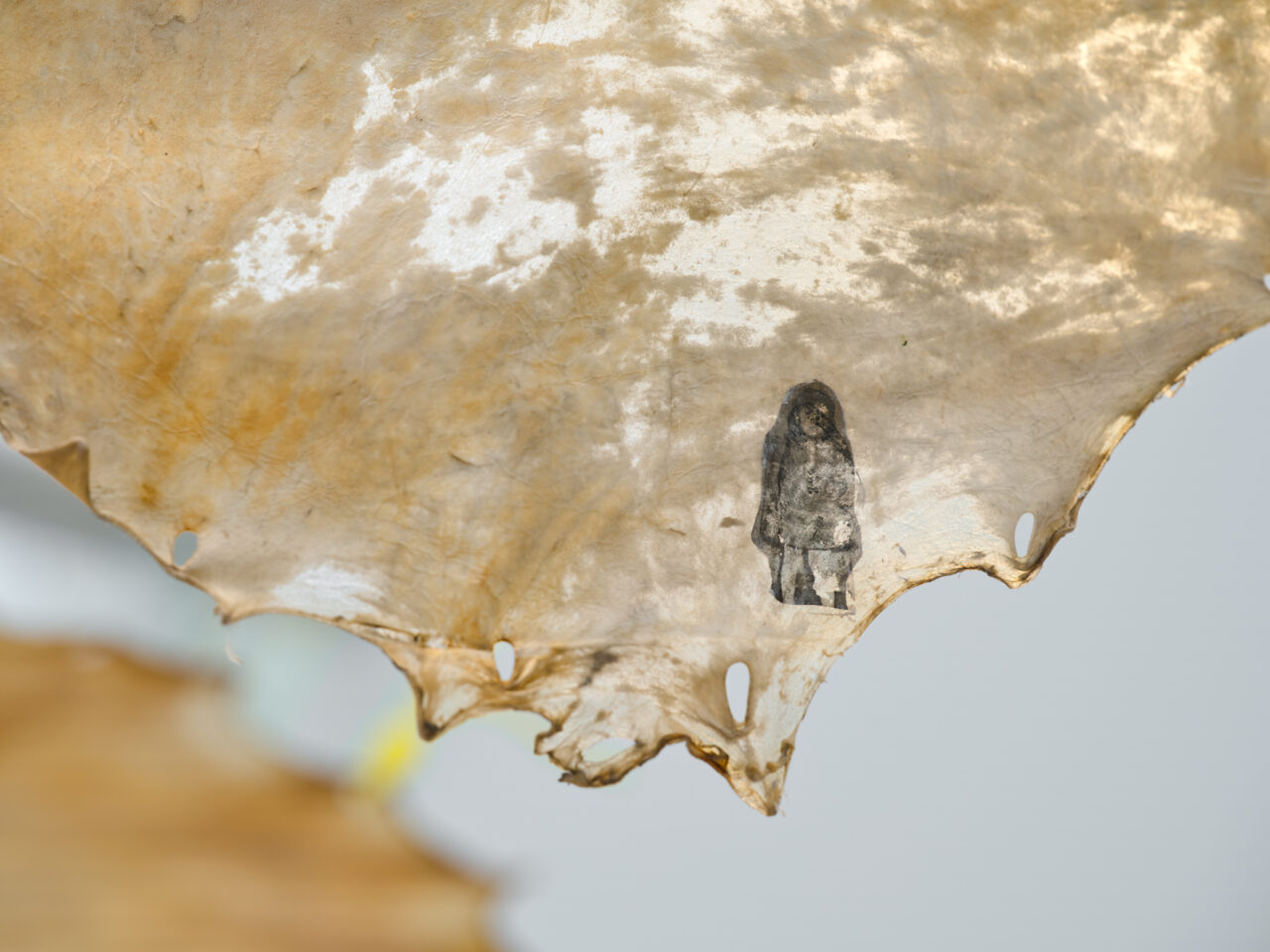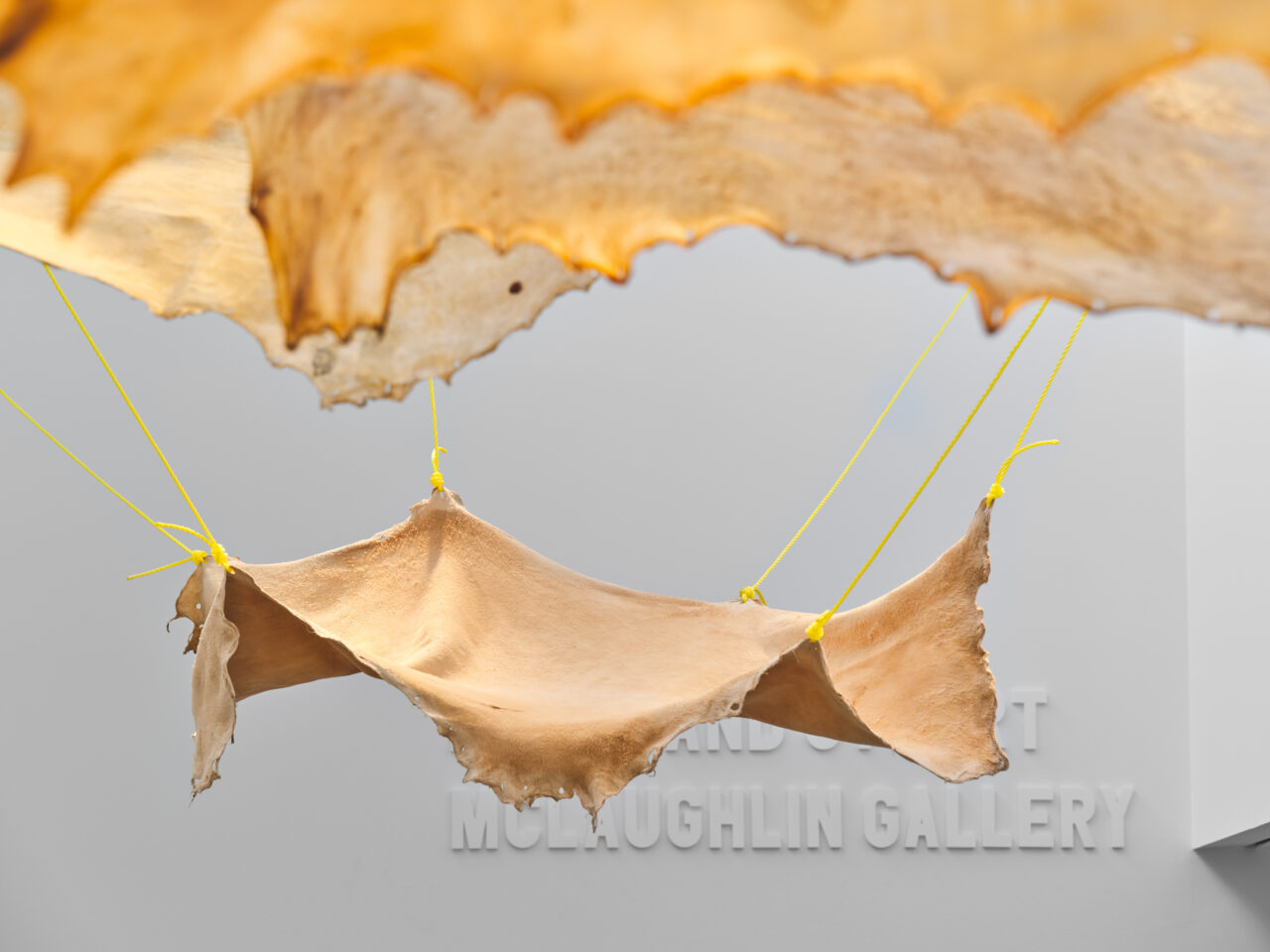Sydney Frances Pascal Solo Exhibition Opens at Polygon Gallery

The show includes seven animal hides tanned by the artist as well as her mentor, master tanner Mara Cur. (Photo courtesy Sydney Frances Pascal)
Posted on | Updated
The artist and В鶹КУЖµ staff member + alum brings her distinct voice and material language to her first solo outing at a major public gallery.
New work by artist and В鶹КУЖµ (В鶹КУЖµ) staff member (MFA 2023) is featured in a solo exhibition at in North Vancouver.
Titled , the show includes seven animal hides in a meditation on the anxious and hopeful act of looking to the past and future at a moment of great change.
“I wanted to think seven generations back and to imagine whether there will be seven generations going forward given the uncertainty with the world, with life in general,” says Sydney, a member of the LГlМ“wat Nation and Aboriginal program coordinator at the Aboriginal Gathering Place.
The seven hides are anchored to the gallery’s walls and ceiling by yellow construction rope. Some are adorned with photo transfers featuring historical figures, while others bear a “personal symbology” rendered in red ochre. The hides include buckskin, rawhide and smoked rawhide — all different stages of the traditional hide-tanning process.

Dramatic shadows cascade from the suspended hides down the walls of The Polygon Gallery. (Photo by Dennis Ha / courtesy The Polygon Gallery)
The hides themselves point to LГlМ“wat traditions that continue to connect families and communities. Meanwhile, the construction rope references colonial forces that aim to pull those communities apart. This relationship parallels how Indigenous people must “learn to adapt, learn to live in this space — it’s just part of the tension of life now,” she says.
We raised ourselves together and alone embodies the paradox of this tension, from despair to promise. For Sydney, that promise is most clearly reflected in the practice of acknowledging and honouring tradition, history, family and community — values she believes offer hope for humanity’s most entrenched problems.
An image of Sydney’s great-great-grandfather, LГlМ“wat Chief William Pascal, taken at Spence’s Bridge during the signing of the LГlМ“wat Declaration of Independence, is featured in the work, while the use of red ochre gestures toward stories Sydney heard about ancestors painting their faces with red ochre to protect themselves from powerful energies. Ochre was also used by LilМ“wat7ul to paint pictographs, some of which remain visible today.

Some of the hides are adorned with photo transfers featuring historical figures, while others bear a “personal symbology” rendered in red ochre. (Photo by Dennis Ha / courtesy The Polygon Gallery)
Sydney had her brother mark the back of each hide with a “fingerprint of ochre with bear grease as a form of protection,” she says.
“I’ve been thinking a lot about pictographs and how I can create my own symbology to tell a new story using old forms. So, by integrating an old symbology and old forms of storytelling into the present time, I can create my own symbology that makes sense for this time. It’s like bringing them into the room to witness what’s happening.”
The title of the work is drawn from a poem titled Who Am I?, written by her grandmother when she first reconnected with Sydney’s mother. The pair were forcibly separated decades earlier by child welfare authorities during the Sixties Scoop.
One of the hides in the show was tanned by Sydney’s hide-tanning mentor, master tanner Mara Cur, and Mara’s partner Mark Santamaria. And Sydney’s brother Daniel, who now works with The Polygon, assisted her with the installation of the work.
“Hide-tanning — and just art in general — are community-based. It’s not just me. There are so many people involved in helping me,” she says, adding that seeing these works in a major public gallery suggests the tradition may remain durable even in an uncertain future. “Having hide-tanning in institutional spaces and seeing more artists view hides in their own way as a form of expression or storytelling makes me feel like the practice is coming back.”

“By integrating an old symbology and old forms of storytelling into the present time, I can create my own symbology that makes sense for this time.” (Photo by Dennis Ha / courtesy The Polygon Gallery)
runs through Sept. 22 at the Polygon Gallery. As part of the exhibition, by Sydney and artist Aerial Sunday-Cardinal (Nehiyaw, Plains Cree) will take place on Thursday, June 20, at the Polygon. The screening will be followed by a conversation between Sydney and Aerial, moderated by exhibition curator Joelle Johnston. Admission is free and open to the public.
Listen to Sydney and Joelle, who also works as Indigenous liaison and community outreach at Polygon,
and to learn more about her work.